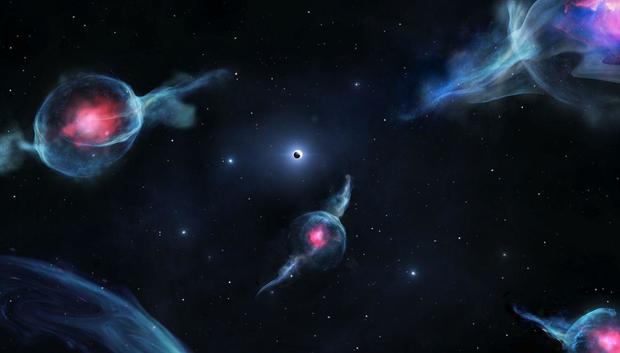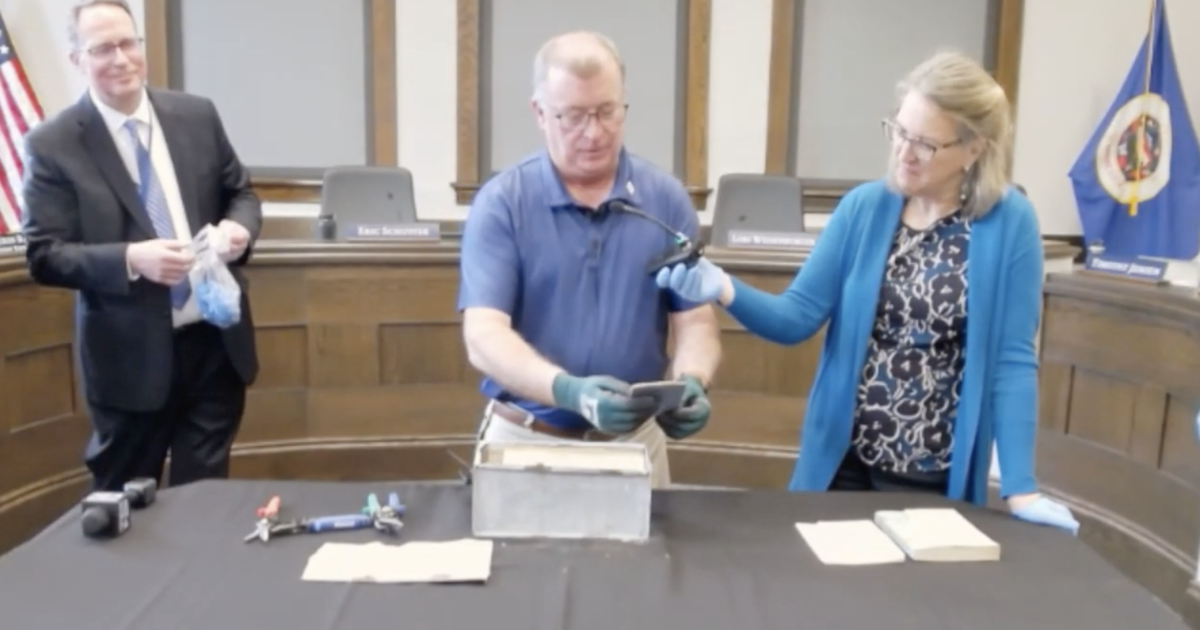Strange objects that "look like gas and behave like stars" discovered orbiting Milky Way's supermassive black hole, study says
The supermassive black hole at the center of our galaxy, the Milky Way, is always up to something unusual. Now, astronomers have spotted strange new objects close by — and they aren't quite sure what they are.
Using 13 years worth of data from the W.M. Keck Observatory in Hawaii, astronomers were able to identify a new class of objects extremely close to the black hole, Sagittarius A*. According to a study published Wednesday in the journal Nature, the six objects, named G1 through G6, appear to be interacting with the black hole.
"These objects look like gas and behave like stars," co-author Andrea Ghez said in a statement.
Some astronomers believe the elongated blobs are gas clouds, several times the mass of the Earth. Others think they seem more like small stars covered in dust, since they are able to closely orbit the black hole's edge without being completely destroyed by its pull.
Typically, the objects appear compact, but as they near the black hole during their orbits — which can last from 170 to 1,600 years — they stretch out.
The objects' behaviors are confusing: It's not clear if they're gas or stars. But the study's authors now believe they may be an unusual hybrid of both.
2005: The mystery begins
The first two G objects were found in 2005 and 2012 by Ghez's research group. After G2 closely approached the black hole in 2014, scientists believed it was likely two stars that had merged into a much larger star, covered in "unusually thick" gas and dust.
"It went from being a pretty innocuous object when it was far from the black hole to one that was really stretched out and distorted at its closest approach and lost its outer shell, and now it's getting more compact again," Ghez said.
While the outer shell was dramatically stretched, the inner dust was not, indicating the presence of a stellar object inside G2, lead author Anna Ciurlo said. Sagittarius A* should have ripped G2 to shreds, but instead the object just passed right by it, prompting scientists to reconsider its classification.
"G2 survived and continues happily on its orbit; a gas cloud would not do that," Ghez said in 2014.
Now, the team has discovered G3, G4, G5 and G6. The new objects have completely different orbits than the first two, but they prove they aren't as rare as once believed, creating an entirely new class of cosmic phenomena.
"One of the things that has gotten everyone excited about the G objects is that the stuff that gets pulled off of them by tidal forces as they sweep by the central black hole must inevitably fall into the black hole," said co-author Mark Morris, UCLA professor of physics and astronomy. "When that happens, it might be able to produce an impressive fireworks show since the material eaten by the black hole will heat up and emit copious radiation before it disappears across the event horizon."
After studying the objects' shapes, orbits and interactions with Sagittarius A*, the astronomers believe each G object could be a pair of binary stars, meaning they revolve around each other. Ghez believes they merged over the course of more than 1 million years thanks to the strong gravitational force of the supermassive black hole.
The objects are helping to explain how galaxies and black holes all over the universe evolve. Ghez said star mergers may actually be much more common than originally thought.
"It's possible that many of the stars we've been watching and not understanding may be the end product of mergers that are calm now," she said. "We are learning how galaxies and black holes evolve. The way binary stars interact with each other and with the black hole is very different from how single stars interact with other single stars and with the black hole."
According to the team, there may be even more unusual objects in this new class, but more analysis is needed. Ghez said this research could explain the chaos that is happening in the majority of galaxies.
"The Earth is in the suburbs compared to the center of the galaxy, which is some 26,000 light-years away," she said. "The center of our galaxy has a density of stars 1 billion times higher than our part of the galaxy. The gravitational pull is so much stronger. The magnetic fields are more extreme. The center of the galaxy is where extreme astrophysics occurs — the X-sports of astrophysics."






